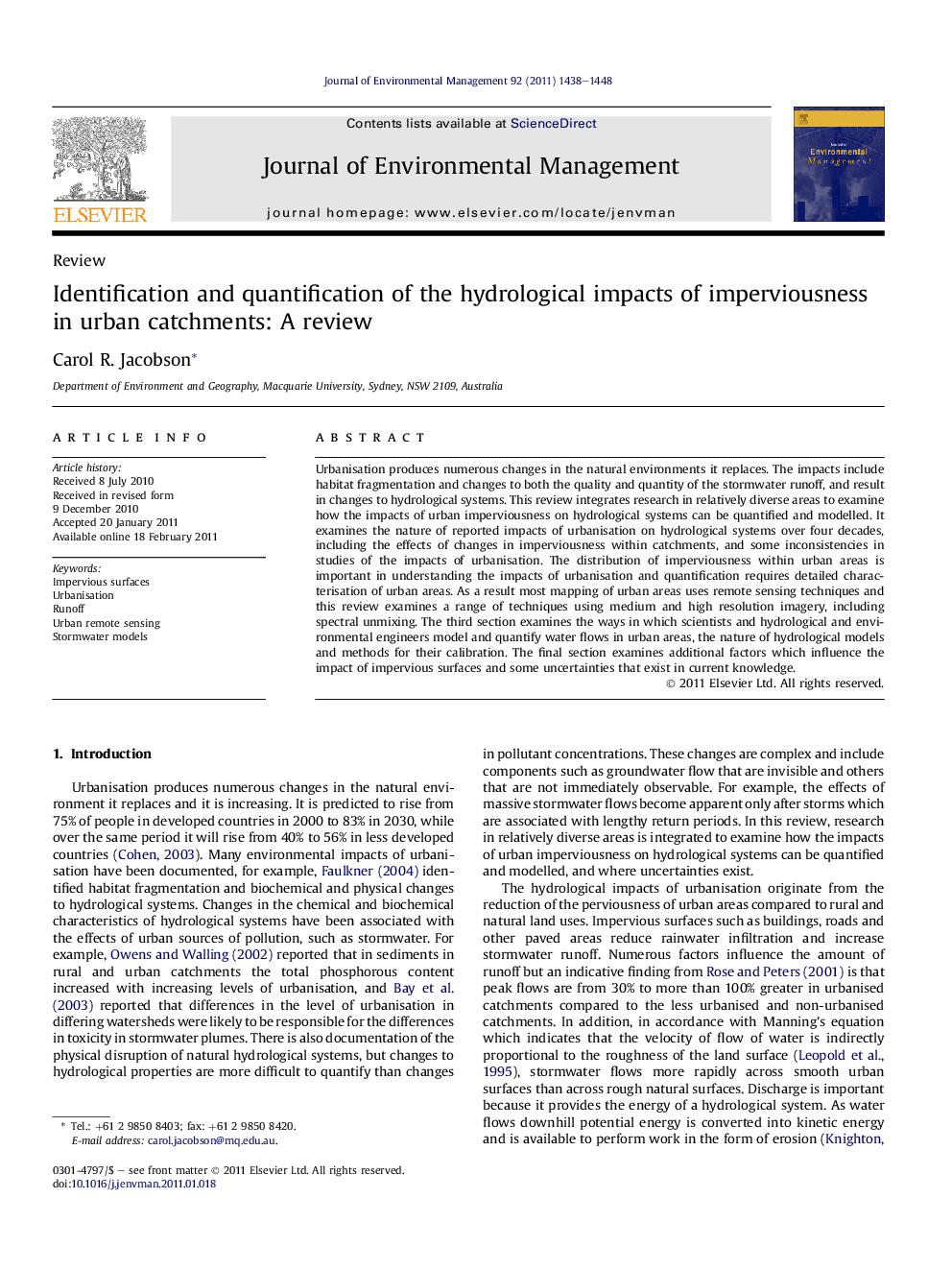| Article ID | Journal | Published Year | Pages | File Type |
|---|---|---|---|---|
| 10505471 | Journal of Environmental Management | 2011 | 11 Pages |
Abstract
Urbanisation produces numerous changes in the natural environments it replaces. The impacts include habitat fragmentation and changes to both the quality and quantity of the stormwater runoff, and result in changes to hydrological systems. This review integrates research in relatively diverse areas to examine how the impacts of urban imperviousness on hydrological systems can be quantified and modelled. It examines the nature of reported impacts of urbanisation on hydrological systems over four decades, including the effects of changes in imperviousness within catchments, and some inconsistencies in studies of the impacts of urbanisation. The distribution of imperviousness within urban areas is important in understanding the impacts of urbanisation and quantification requires detailed characterisation of urban areas. As a result most mapping of urban areas uses remote sensing techniques and this review examines a range of techniques using medium and high resolution imagery, including spectral unmixing. The third section examines the ways in which scientists and hydrological and environmental engineers model and quantify water flows in urban areas, the nature of hydrological models and methods for their calibration. The final section examines additional factors which influence the impact of impervious surfaces and some uncertainties that exist in current knowledge.
Related Topics
Physical Sciences and Engineering
Energy
Renewable Energy, Sustainability and the Environment
Authors
Carol R. Jacobson,
